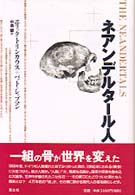Full Description
'I love the author's delineation of her own understanding of concept-based teaching over an 18-year period. Somehow that humanizes the work of teaching-helps us understand that only as we risk growth will we be able to guide our students in that way as well' - Carol Tomlinson, Professor of Educational Leadership, Curry School of Education, University of Virginia 'A worthwhile and important contribution to the field' - Jay McTighe, Educational Author and Consultant, McTighe and Associates 'Reader friendly, lots of illustrations and examples, personal in tone, and down to earth' - Kathy Hargrove, Associate Dean, School of Education and Human Development, Southern Methodist University Drawing on Lynn Erickson's 15 years experience of working with teachers, curriculum developers, teacher educators, and instructional leaders, this resource offers a complete guide to designing curricula that foster the continuous growth and development of a student's critical, abstract, and creative learning skills. Educators will learn how to:* Bring coherence and clarity to high-quality curriculum design and instructional planning * Teach the way that students' minds learn best * Encourage students' creative and abstract thinking, regardless of level or subject area * Gain the support of headteachers and district administrators
Contents
List of Figures and ChartsForeword by Carol Ann TomlinsonAcknowledgmentsAbout the AuthorIntroduction1. The Thinking Classroom Classroom Snapshots The Brain at Work Synergistic Thinking Developing the Intellect Disciplinary Ways of Thinking and Doing Thinking Teachers and Students Summary Extending Thought2. The Structure of Knowledge The Inherent Structure of Knowledge A Concept-Based Journey The Paradigm Shift for Educators The Texas Depth and Complexity Model Shaping Conceptual Understanding Grade by Grade Summary Extending Thought3. Meeting Academic Standards With Integrity What Academic Standards Are What Academic Standards Are Not Ideas Through the Grades Contextualizing Standards Into Classroom Curricula Bringing District-Level Coherence to Standards Summary Extending Thought4. Designing Concept-Based Units and Lessons Interdisciplinary and Interdisciplinary Unit Design: A Short Primer Creating Lesson Plans Performances Versus Activities Questions and Answers on Unit and Lesson Design Summary Extending Thought5. Concept-Based Instruction Thinking Teachers Introducing "Brain Power" and Concepts to Students Sample Concept-Based Lessons Adapting Instructional Materials Supportive Best Practices Summary Extending Thought6. Leadership Roles District Leadership Building-Based Leadership Teacher Leaders Teacher Training Institutions SummaryExtending ThoughtResource A. Concept-Based Curriculum Glossary of TermsResource B. Curriculum Document PrefaceResource C. Teacher Observations--Sample FormsResource D. Concept-Based Graphic OrganizersResource E1. Sample Unit and Lesson PlannerResource E2. Completed Unit and Lesson PlannerResource F. The Knowledge Domain and Cognitive ProcessesResource G. Sample School Districts Using a Concept-Based Model for Curriculum and InstructionReferencesIndexIllustrator





